GODDESS INDRANI
Female deities are believed to be the symbol of beauty, compassion, fertility and motherhood. Hinduism is home to numerous powerful female Goddesses who are worshipped by millions of devotees for their extraordinary supernatural powers and the immense faith that the deity protects them from harm and cares for their needs and well-being. One such Devi who epitomizes all the attributes of a female deity is Goddess Indrani.
WHO IS GODDESS INDRANI?
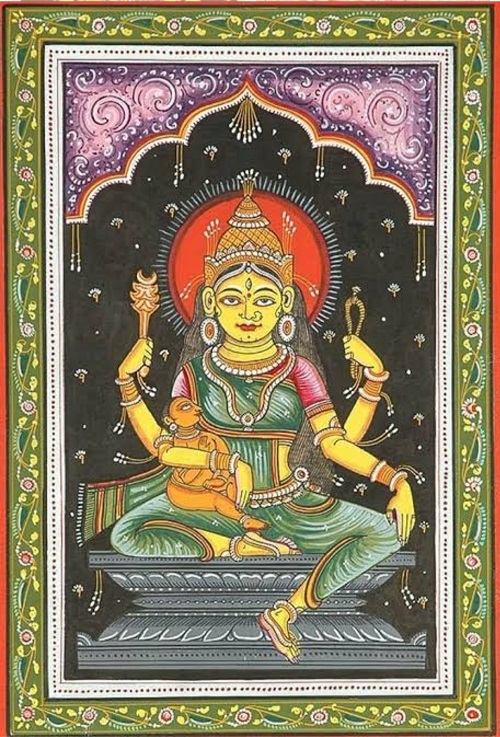
As the name implies, Indrani is the consort and queen of Lord Indra, God of Thunder and Lightning, and the King of the Devas. She is a deity who is referenced in the Hindu scriptures. The ancient text – Rig Veda – holds her in high regard and praises her exceptional and exquisite beauty. Indrani is also renowned by several other names with Shachi being the most popular. Shachi is believed to stand for Shakti, the power and Indrani is regarded as a formidable divine being. She is also referred to by other names like Mahendri, Aindri, Pulomaja, and Poulomi.
Goddess Indrani is the daughter of Asura Puloman. Thanks to her extraordinary beauty and alluring sensuality, Indrani was wanted by numerous men, several of whom attempted to forcefully wed her. Indrani is occasionally recognized as a Matrika (Mother Goddess) and is a significant deity in Shaktism, a major sect of Hinduism. She is seldom revered as an independent divinity and is typically venerated with her consort – Lord Indra. Goddess Indrani is also cited in the texts of other faiths such as Buddhism and Jainism.
ORIGINS OF THE NAME
Similar to other Vedic Goddess-Consorts whose names stem from their husband’s name by including a feminine termination, the name ‘Indrani’ originates from the word ‘Indra’ and suggests – ‘Wife of Indra’.
ORIGINS OF GODDESS INDRANI IN HINDU SCRIPTURES
Goddess Indrani is first cited in the Rigveda, which was penned in the early second millennium BCE. She is believed to be the most ‘fortunate woman’ as her husband Indra is immortal and cannot die from old age. While Indrani is discussed more than any other Vedic Goddesses-consorts, she continues to be eclipsed by her spouse. Hymn 10.68 of the Rigveda glorifies her as a woman who was exceptionally gorgeous and cites her rivals to be jealous of her. Another hymn 10.59 depicts Indrani as a deity who was conceited and claimed that her husband Indra is submissive to her will. But despite this, in the same hymn, it is said that Indrani requests God to get rid of rivals for Indra’s benefit. A hymn in Rigveda talks about the conflict between Lord Indra and Goddess Indrani where she becomes irritated with the mischief of Vrishakapi – Indra’s pet ape – and protests against it.
In the later Hindu scriptures, including the Puranas as well as epics Ramayana and Mahabharata, she is more commonly referenced as Shachi and believed to be the daughter of the demon Puloman, who is the son of Sage Kashyapa and his wife Danu. She married Lord Indra and thereby became the Queen of the Devas (Gods). In the Bhagavata Purana, it is cited that Indra and his wife Indrani (Shachi) had three sons who were called Jayanta, Rishabha and Midhusha. The divine couple is also believed to have a daughter called Jayanti, who married Indra’s nemesis Shukra. In a couple of scriptures, Indra and Indrani’s (Shachi) daughter Devasena wed Kartikeya.
ICONOGRAPHY OF GODDESS INDRANI
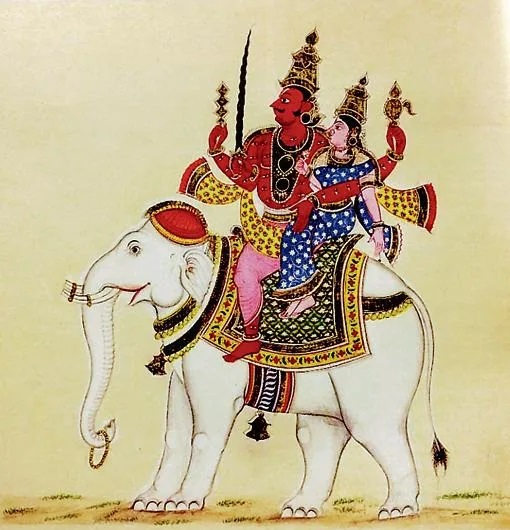
Sculptures of Lord Indra and his wife Goddess Indrani are often observed in Hindu temples. They are generally portrayed sitting on the white elephant Airavata. Indrani is usually depicted with two arms and is shown sitting on the lap of her husband Lord Indra. She is believed to have a golden complexion and is clad in blue attire. One of her hands holds her husband while the other carries a Santana-Manjari.
When she is portrayed as a Matrika (part of the Saptamatrika), Goddess Indrani has a red complexion with three eyes and four hands. Two of her hands are depicted in the Varada and Abhaya mudra, while the other two hands carry a vajra (thunderbolt) and a spear. She can be observed wearing a kirita on her head that is adorned with several shimmering ornaments. Her vahana (mount or vehicle) is believed to be an elephant, the same as her emblem banner.
As per the Vishnudharmottara, just like Lord Indra, his wife Goddess Indrani is also draped in yellow and is believed to have one thousand eyes. She has six arms, four of which hold a sutra, pot, container and vajra. The remaining two are depicted in Abhaya and Varada mudra. Meanwhile, the Devi Bhagavata Purana mentions that the Goddess has two arms and holds an ankusha (goad) and vajra, while the Purva Karangama portrays her with two eyes and holds a lotus in one hand. Goddess Indrani is connected to the Kalpaka tree. Occasionally, a lion is cited to be her vahana.
LEGENDS ASSOCIATED WITH GODDESS INDRANI
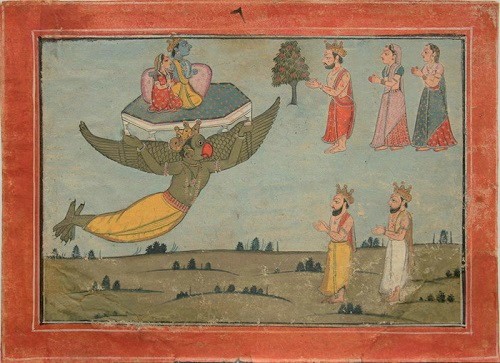
There is no shortage of fabled tales about Goddess Indrani. As the consort of Lord Indra, she is part of numerous stories that talk about the various goings-on pertaining to Indra. Goddess Indra was the daughter of Puloman, an Asura, who was killed by her future husband Indra. She is believed to be the first Shakti, the embodiment of feminine power, and the initiator of the idea of strong female consorts, which evolved successively into Shakti worship.
One of the most intriguing tales about Goddess Indrani is the legend of Nahusha. Once Lord Indra had to escape from his kingdom and had to hide elsewhere because he had committed the sin of slaying a Brahmin. King Nahusha, who had recently come into power and started ruling the heavens, became conceited and had a powerful desire to possess the gorgeous Indrani and began making sinful advances towards her. Indrani was extremely distressed because of this and sought shelter from a few sages, who counseled her to put an end to Nahusha’s dictatorship and return the heavens to her husband Lord Indra.
As per the plan, Indrani informed a nagging Nahusha to visit her in a special palanquin carried by the sages. Misguided by his lustful desire, Nahusha did as he was told instantly. When the short Agastya was not able to carry the palanquin quickly, Nahusha touched the great sage with his feet and implored him to move fast and uttered the words ‘Sarpa, Sarpa’.
This angered sage Agastya and he cursed the insolent king to turn into a ‘Sarpa’ i.e., a serpent himself. Nahusha transformed into a snake immediately and dropped down from heaven. Lord Indra was also able to atone for his sin and could get back to his wife and also reacquired the Heavens, due to the amazing efforts of Indrani Devi.
Goddess Indrani is also portrayed as the female shadow of Indra, who has uncanny similar traits. They also have the same vehicle – the renowned white elephant – Airavata. Lord Indra is also believed to have bestowed her with immortality.
Another legend from the Puranas talks about how Indrani owned the Parijata tree, which was one of the ‘ratnas’ materializing from the ‘Samudra Manthan’ (churning of the ocean). As per Vishnu Purana and Bhagavata Purana, Lord Krishna and his wife Satyabhama paid a visit to Amaravati to give back the earrings of Lord Indra’s mother Aditi, which were robbed by the demon Narakasura. It is said that Indrani deemed Satyabhama to be inferior due to her mortal background and presented her to Aditi. Later, Satyabhama chanced upon the Parijata tree as she was walking through Indra’s garden. She made a decision to move it to Dvaraka. When the guards confronted Satyabhama, she challenged Indrani to get her husband to shield the tree if he was genuinely obedient to her. After Indrani was made aware of Satyabhama’s words, she insisted that her spouse bring the tree back to her. A war between Lord Indra and Lord Krishna ensued, in which Krishna emerged as the winner and took the tree with him.
Significance of Goddess Indrani
Goddess Indrani is depicted as a woman of indistinguishable beauty, whose allure almost no one could resist. With everyone yearning deeply for her, she ended up becoming an object for envy and heartburn for several. Thus, she came to be observed as the Goddess of Jealousy and Wrath. Her expressive eyes have a special type of magnetism that works well in drawing people towards her.
Goddess Indrani was extremely dear to her husband Lord Indra. She also gave birth to several children such as Jayanta, Jayanti, Midhusa, Nilambara, etc. Lord Chitragupta, believed to be Goddess Indrani’s son, is a renowned assistant of Lord Yama, the God of Death. He is believed to keep a thorough log of the good and bad actions of people.
Vahana of Goddess Indarani
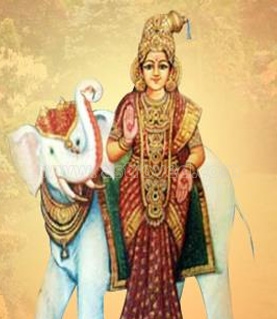
The vahana of Goddess Indrani is said to be the white elephant, Airavata. It is the same as her emblem banner. Lord Indra and Indrani Devi are commonly showcased riding on the elephant. Occasionally, a lion is portrayed as the mount or vehicle for Goddess Indrani.
Interesting Facts about Goddess Indrani
- Goddess Indrani is cited in other faiths such as Jainism and Buddhism. In Jainism, she is believed to be the mirror image of her consort Lord Indra. They are meant to stand for the perfect couple. As per mythology, when a Tirthankara is birthed, Indra comes down to Earth along with his spouse Indrani, riding the great white elephant Airavata, to commemorate the joyous occasion. When it comes to Buddhist Pali Canon, Goddess Indrani is called Suja, the spouse of Sakra.
- Lord Indra and Goddess Indrani are believed to be the ‘Kul Devata’ (family deity) of the royal family belonging to Vidarbha.
- According to Hindu astrology, Indrani is regarded as the ruler of Shukra (Venus) and epitomizes the quality of rajas.
WORSHIPPING GODDESS INDRANI
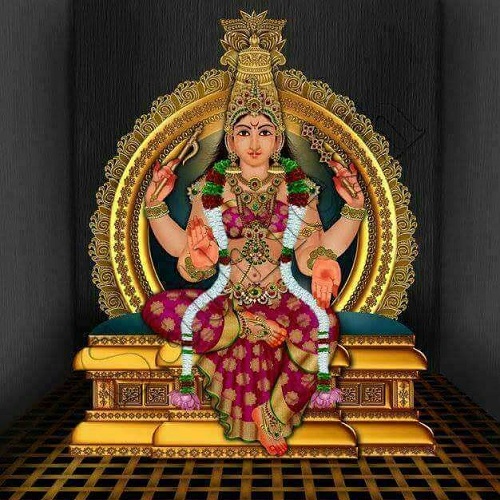
Goddess Indrani is believed to be in a Godly avatar and even though she was born in the family of the Asuras, she is considered to be honorable, pure, compassionate and exceptionally gorgeous.
She is also observed as one of the Saptamatrikas aka the seven divine mothers. Apart from Indrani, the others are Brahmani, Vaishnava, Maheshwari, Kaumari, Varahi and Chamunda. Worshippers tend to venerate the Saptamatrikas more in South India.
Even though she is not typically revered as an independent deity, she is worshipped with a great amount of devotion as part of these mother Goddesses. She continues to be a poignant and well-worshipped Astral Spirit, specifically in southern parts of India.
A puja devoted exclusively to Goddess Indrani is conducted during Ashada Navaratri and is said to bless devotees with good welfare and a healthy and prosperous life.
INDRANI HOMAM
Indrani Homam is devoted to Goddess Indrani who is renowned as the consort of Lord Indra and the Queen of the devas. She is one of the Saptamatrikas – the seven divine mothers.
Based on the recommendation of the Vedas and knowledgeable pandits, conduct this holy Homam on a Friday and Pournami (Full Moon) which are regarded as the best days for optimum results. Recite the sacred mantra devoted to Goddess Indrani for gaining a peaceful mind and for destroying envy. Chanting this mantra helps in increasing wealth and enjoying the pleasures life offers you.
BENEFITS OF WORSHIPPING GODDESS INDRANI
Conducting this Homam aids you in gaining relief from all sorts of difficulties and obstacles life throws at you. It aids you in achieving all your goals. Worshipping Goddess Indrani can help you achieve an abundance of wealth and success. You can get rid of the malefic effects of doshas and overall negativity.
FESTIVALS DEVOTED TO CELEBRATE GODDESS INDRANI
Navaratri
Saptamatrikas (which includes Goddess Indrani) are generally venerated during Navaratri. They are usually worshipped in specific areas of Tamil Nadu and Kerala and also certain regions of North India.
In the upcoming year, Navaratri begins on
26th September and ends on 4th October 2022
.
Raksha Bandhan
There are numerous legends talking about the origin of the Raksha Bandhan festival. Originally, it wasn’t meant as a mark of sibling love as depicted in this tale featuring Lord Indra and his wife Goddess Indrani. During a war between the Devas and Asuras, the former were losing to King Bali.
Indra’s consort Indrani prayed to Lord Vishnu, who offered a sacred thread which she tied around her husband Indra’s wrist. Since it contained powers, Indra was victorious and the thread became his shield against any evil.
In the upcoming year,
Raksha Bandhan falls on 11th August, 2022.

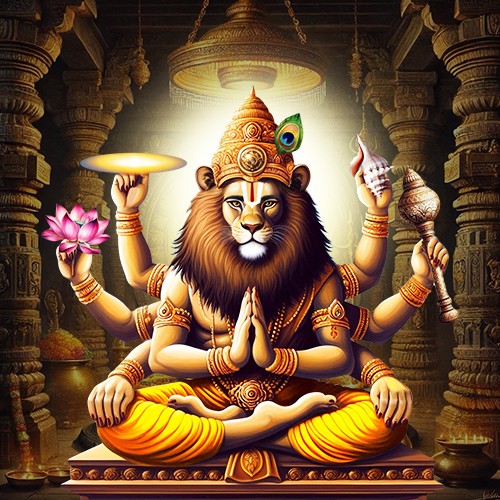
-in-Astrology.jpg)




.jpg)


Comments 0
Leave your thought here